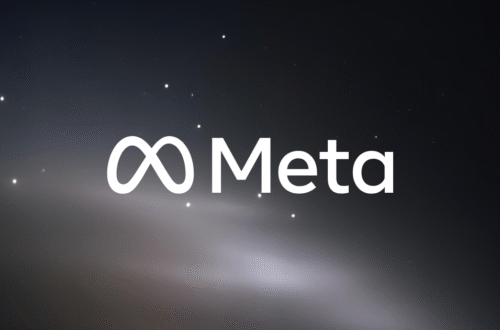Just when you thought the AI arms race couldn’t get more crowded, Meta kicks down the door with Llama 3.1 405B. Forget the smaller models; this is the heavyweight contender we’ve been waiting for, aimed squarely at OpenAI’s golden child, GPT-4o. The question isn’t just if it’s good, but if it’s good *enough* to force a real choice for developers & businesses who were previously all-in on the OpenAI ecosystem. Meta’s not just competing anymore; it’s trying to change the rules of the game with a powerful, “openly available” beast.
What Exactly is Llama 3.1 405B?
Let’s get the big numbers out of the way. The “405B” refers to 405 billion parameters. In the world of large language models (LLMs), parameters are basically the knobs & dials the model uses to learn from data & make predictions. More parameters generally mean a more capable, nuanced model, and 405 billion is a whole lot of knobs. This puts it in the same weight class as the models powering GPT-4.
This isn’t just a scaled-up version of its predecessors. According to Meta’s own announcement, Llama 3.1 was trained on a refined mix of public data & high-quality synthetic data, building on the massive 15 trillion token dataset used for Llama 3. The key upgrades are focused on what everyone actually cares about: reasoning, code generation, & following complex instructions. It also boasts a 128K context window, which means you can feed it a massive amount of info (think an entire book) in a single prompt & it can, in theory, remember all of it.
The Benchmark Gauntlet: Numbers Don’t Lie (Mostly)
So, how does it stack up against the competition? On paper, it’s a monster. Meta is proudly plastering benchmark scores showing the 405B model trading blows with, and sometimes outright beating, top-tier proprietary models like GPT-4o & Claude 3.5 Sonnet.
Take a look at some of the key battlegrounds:
- MMLU (Massive Multitask Language Understanding): A brutal test of general knowledge & problem-solving. Llama 3.1 405B scores an impressive 88.6, nipping at the heels of GPT-4o’s 88.7. Basically a statistical tie.
- HumanEval (Code Generation): Here’s where it gets interesting. Llama 3.1 scores a blistering 91.1, showing off its significantly improved coding chops. This is a huge leap & a direct threat to tools like GitHub Copilot.
- GPQA (Graduate-Level Questions): A test of advanced reasoning. Llama 3.1 hits 50.1, a significant improvement over previous open models but still a space where models like GPT-4o maintain an edge.
But here’s the reality check. Benchmarks are sterile environments. They don’t always capture the “vibe” or the real-world usability of a model. For a more grounded view, the LMSYS Chatbot Arena Leaderboard, which uses blind, head-to-head human voting, places Llama 3.1 405B firmly in the top tier, right alongside its main rivals. It proves the model isn’t just a lab queen; it performs well in the wild.
Beyond the Numbers: What’s It Like to Use?
This is where Llama 3.1 really starts to shine, or at least show its unique personality. Its ability to handle long, complex prompts with that 128K context window is a game-changer. You’re not just asking a question; you’re having a long-form conversation with a subject matter expert you’ve pre-loaded with info.
Here’s a practical example. Imagine you’re a developer tasked with building a new feature based on 30 pages of dense technical documentation & several scattered email threads. With an older model, you’d be copying & pasting snippets, constantly reminding it of the context. With Llama 3.1, you can just dump it all in the prompt:
“Here’s the full project spec doc, the last three planning emails, and our component library’s Storybook link. Based on all this info, generate the primary React component for the user dashboard. It needs to be responsive, pull data from the `/api/v2/dashboard` endpoint, and handle these three specific user roles. Go.”
That’s the kind of complex instruction following that separates the truly useful tools from the clever toys. Its coding skills are particularly sharp, not just for writing boilerplate but for debugging & refactoring existing, messy code. This is a model built for work, not just for writing poems about squirrels.
The “Open” Model with an Asterisk
This is probably the most important part of the Llama story. Meta markets its models as “open,” which is a massive draw for the community. But let’s be clear: the 405B model isn’t open source in the way Linux is. You can’t just download the weights and build a commercial competitor to ChatGPT without strings attached. Meta uses its own custom license that requires companies with over 700 million monthly active users to get a special license from Meta. Yeah, they’re looking at you, Big Tech rivals.
For everyone else-startups, researchers, individual developers-it’s incredibly permissive. You can download it, fine-tune it on your own data, and deploy it on your own hardware. This gives you two things the OpenAI API can’t: total data privacy & deep customization.
This is also where ethics & best practices come in. Meta provides tools like Purple Llama to help developers build safety layers on top of their custom models. The responsibility shifts from the model provider (like OpenAI) to you, the developer. You’re in control, which is powerful, but it also means you own the consequences if your implementation goes off the rails.
Actionable Tips & Useful Resources
So you want to kick the tires? You have options, from easy-access web UIs to full-blown local installations.
For the Curious User
The easiest way to try the 405B model is through platforms that host it. You can chat with it directly on Meta.ai or via integrations on services like Perplexity. This gives you a great feel for its raw conversational & reasoning abilities without any setup.
For the Developer & Tinkerer
If you want to build with Llama, you’ve got a buffet of choices:
- Hugging Face: The de facto hub for the AI community. You can find all the Llama 3.1 models, documentation, and starter code on their platform. Check out the 405B model card to get started.
- Running Locally: While running the 405B model requires some serious hardware (we’re talking multiple high-end GPUs), you can easily run the smaller 8B and 70B models on a decent consumer machine using tools like Ollama. This is a fantastic way to learn the ropes of the Llama architecture.
- Cloud Platforms: Services like Fireworks.ai, Replicate, and various cloud providers offer APIs and infrastructure to run or fine-tune Llama models without buying your own server farm.
The Final Verdict: A True Challenger Arrives
Llama 3.1 405B isn’t a “GPT-4o killer.” That’s a lazy, boring take. The market is now too mature for single-model dominance. What it *is* is the first truly credible, openly accessible alternative for high-stakes, production-grade AI. OpenAI still has the ecosystem advantage, the polished user experience of ChatGPT, and the brand recognition. Who even knew what an LLM was before ChatGPT?
Meta’s strategy is different. It’s a classic platform play: give the builders powerful tools, cultivate a community, & let a thousand flowers bloom. For businesses worried about sending their proprietary data to a third-party API or those who need a highly customized model, Llama 3.1 is a godsend. The choice is no longer between OpenAI and… well, a less good OpenAI. The choice is now between a walled garden & a wild, powerful frontier. And that makes the future of AI a whole lot more exciting.



